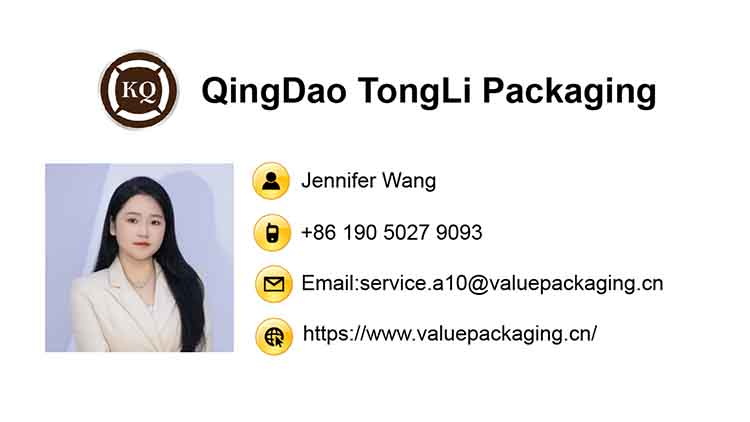
Standup pouches are a large part of the packs for platinum chips in the current market. The standup spout pouch utilizes a folded gusset at the bottom, to hold extra products, and at the same time, present a better display when they stand on the goods shelves. It would require the foil materials to be strong and durable, to assure the products are well protected during the filling, transit, and distribution process.
Based on a flexible combination of various polymer film materials, the foil materials can provide excellent barrier properties, protecting the platinum chips from air, moisture, and light. Furthermore, a creative artwork design can be printed on all sides of the standup pouch, including all the information for branding and sale, which makes the final package more attractive to consumers.
As a well-known flexible converter located in Qingdao, China, we are making the best use of the packaging film materials in the market, listed below.
- fossil chemical polymer films
- Aluminum foil metal sheet
- vacuum metalized film materials
- Ceramic film substrates
- plant-based biopolymer materials
- biodegradable film materials
- compostable substrate films
- Fully recyclable substrate films
We are devoted to creating story-telling standup bags for platinum chips that increase product sales and establish a good brand image.
In this post, we will analyze the exact foil materials of this 150-gram platinum chips standup bag, hoping it could serve as a reference for your products.

Ok, let’s get into the details of this standup bag.
Packaging Foil Materials
The figure below shows the composition structure of this laminated foil material used to convert this standup laundry detergent bag.

It is made of triplex layers, with the outside PET film 12 microns working as the print substrate film, the VMPET film 12 microns working as the middle barrier layer, and finally, the LDPE film working as the inner sealing layer. The thickness of the LDPE film should be adjusted to suit the requirements of 150g platinum chips.
Next, let’s get into a deeper understanding of each substrate film material.
PET Film
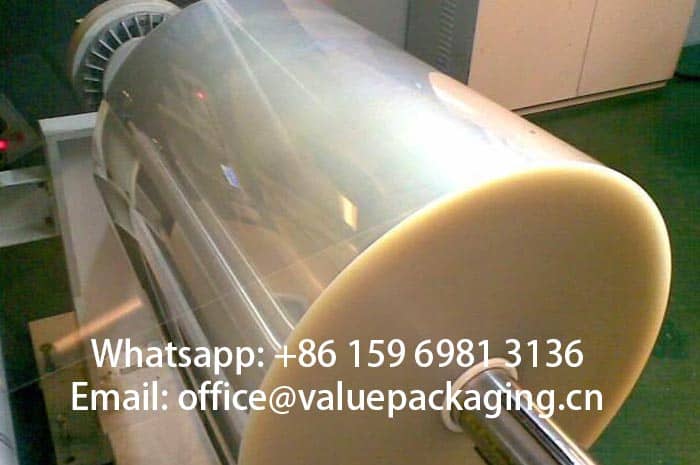
PET Film, is one of the most commonly used printing substrates in flexible packaging sachets. With great optical clarity, high gloss, good chemical resistance, stable mechanical strength, excellent dimensional stability, and great printability, it can present the customer artwork print in great quality, and also provide great mechanical strength to the final package.
The most commonly used thickness of PET film applied in the flexible packaging industry is 12 microns, which equals 0.48 gauge. So whenever you see PET12 or 0.48 g PET, you will know they mean the same thing.
VMPET Film
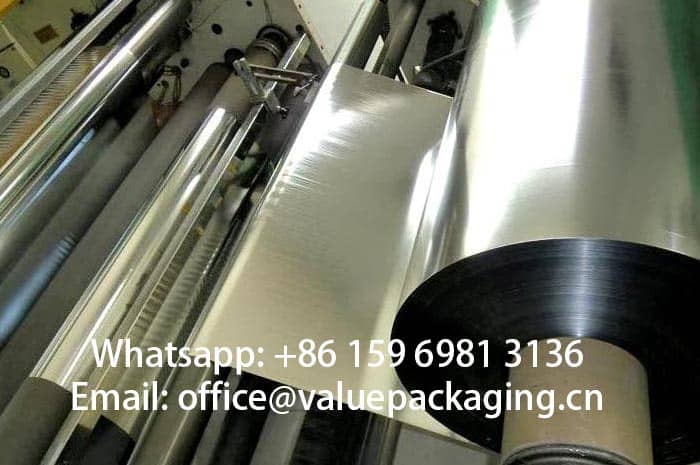
VMPET film is short for vacuum metalized polyester film. It is achieved under vacuum conditions by depositing a thin layer of aluminum atoms onto the surface of a PET (polyester) film substrate and finally realizing a bright metallic film that is widely used in flexible packaging and standup pouch packages.
LDPE
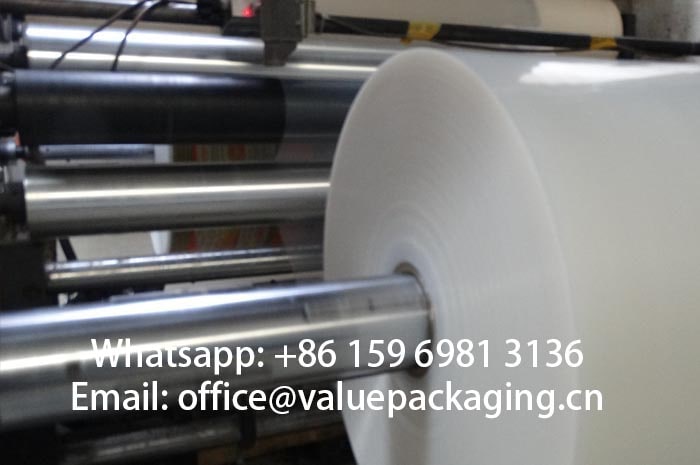
LDPE means low-density polyethylene film, the most used inner sealing layer for standing juice bags. LDPE is also lightweight, easy to fabricate, and has good chemical and impact resistance. LDPE is recyclable and reusable, making it a popular alternative to traditional plastic. LDPE is nontoxic, non-contaminating, and has high break resistance. Most importantly, LDPE membrane can be modified against the requirement of specific products, and finalize the package with great seal strength and protection. The thickness of the LDPE membrane film will be decided against the particular application.
These 3 layers are bonded together into a finished laminated foil material under the dry lamination or solvent-free lamination process. Usually, we describe the finished laminate as PET12/VMPET12/LDPE foil.
Great Standup Effect
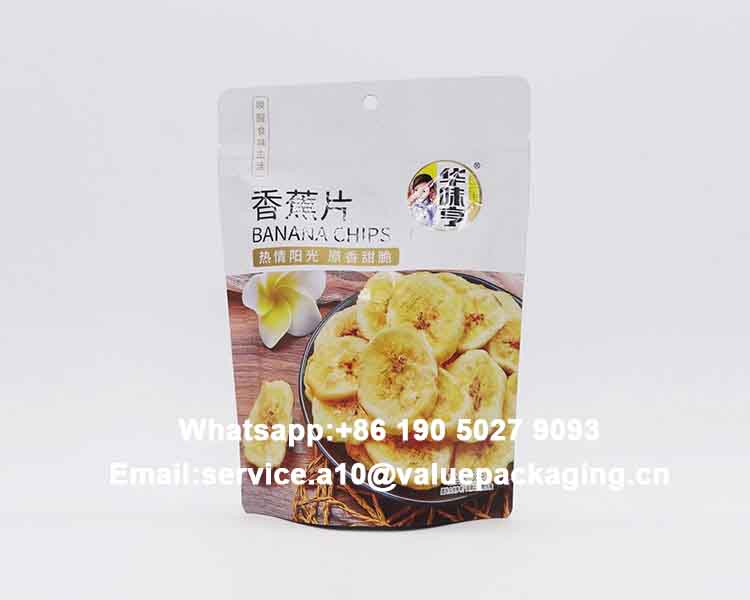
Through the below video, you may learn the standing effect when platinum chips are filled into the stand-up bag based on this laminated foil PET12/VMPET12/LDPE.
Excellent Airtight Property for Zipperlock
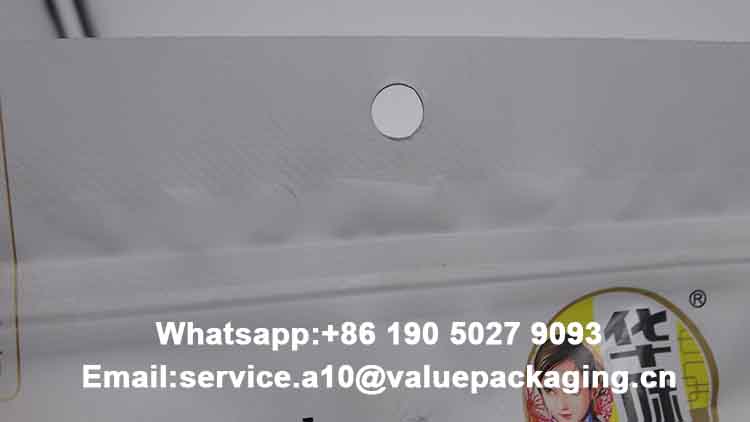
This single-track plastic zipper is applied onto the doy-pack. The zipper will be tightly sealed with the inner LDPE film of the pouch. It enables the package to be repeatedly opened and closed with great airtight properties. The platinum chips can be kept fresh for a long time after being opened.
Serious measures are taken in our QC work to check the airtight properties for the inner zipper, and you are advised to have a further understanding of this test progress through the video below.
Mechanical Property
Tensile-strength
The package will protect platinum chips in filling, transit, and distribution. Under the emergency circumstances of unexpected shock in delivery or packages falling off the goods shelf, the package will never be allowed to break.
This reinforced laminated foil is achieved with great mechanical strength, with some standard items as below.
- Tensile Strength
- Sealing Strength
- Anti-puncture Strength
- Burst Impact Strength
- Anti-pressure Property
The above tests are performed against each order based on customer requirements, and you may check the exact values of this foil material in the Technical Date Sheet part of this post.
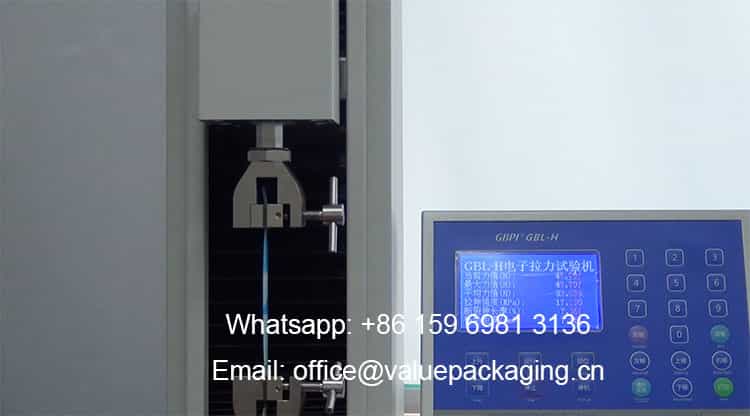
Drop Test
In our daily QC work, there is a more reliable method to check if the bag strength is enough to meet the final requirements of various customers. We perform a drop test against each order, of course, the standard for this drop test should be decided against customer needs.
Here, we are going to fill 1000 grams of rice into this bag, perform the drop test from 1.6 meters high, 3 times, and check if it breaks.
Barrier Performance
Usually, the barrier performance of a multi-material laminate is evaluated by WVTR (short for water vapor transmission rate) and OTR (Oxygen Transmission Rate). The below table shows the typical value of the WVTR and OTR of the most common substrate films in flexible packaging.
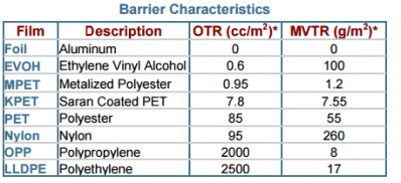
Based on our experience, PET/VMPET/LDPE foil laminate will be able to meet most of the requirements for platinum chips. WVTR (short for water vapor transmission rate) and OTR (Oxygen Transmission Rate) are evaluated for this laminated foil, with typical values listed in the below table.
| Item | Standard | Unit | Typical Value |
| Water Vapor Transimission Rate | ASTM E 96 | g/m2/24hr | 1.25 |
| Oxygen Transmission Rate | ASTM D 372-99 | cc/m2/24hr | 1.36 |
Technical Data Sheet of 150 grams platinum chip stand-up pouch
Here, we attach the specification sheet of this 150-gram platinum chips sachet based on foil laminate PET12/VMPET15/LDPE.
More tests are included in this specification sheet with items available listed as below.
- Yield (grams per square meter)
- Tensile Strength (Mpa)
- Elongation Rate (%)
- Coefficient of friction, short as COF
- Solvents Left (mg/m2 )
- Sealing Strength (N/15mm)
- Sealing Conditions
- Bond Strength (N/15mm)
- Burst Strength (J)
- Anti-Puncture ability (N)
- Drop Test Ability (cm)
- Anti-pressure ability (kgs)
- Water Vapor Transmission Rate (g/m2/24hr)
- Oxygen Transmission Rate (cc/m2/24hr)
More Sustainable Materials Options
Along with the increasing burden of fossil-chemical polymer materials discarded into our environment, there is an unprecedented demand for sustainable packages which leads to a more eco-friendly activity of the business. Upon the recent investigation of the detergent market, more and more consumers are more likely to purchase a product that acts toward environmental sustainability.
Compostable Packaging Materials
The compostable packages are based on plant-based fibers like cellulose, or bio-mass like corn starch, cassava, or sugarcane. The resins derived from these resources are usually named bio-polymer, which can break down into inorganic elements under the functions of algae, bacteria, and other microorganisms.
We have developed several compostable foil materials that can be intended for roasted sunflower seeds, with the list below.
- Cellulose/Metallized Cellulose/PLA+PBAT Film
- Metallized Paper/Cellulose/VMPET/PLA+PBAT Film
- Kraft Paper/Metallized Cellulose/PLA+PBAT Film
Fully Recyclable Mono Materials
Compared with the high cost of compostable foil materials, fully recyclable materials sachets, and rolls are flooding the market for lightweight product packages in the market at much lower prices.
Along with the improvement of barrier performance of PE film materials, their foil laminate can be enabled with a fine property to keep the sunflower seeds from moisture. A layer of PVA coating is applied over the surface of LDPE and HDPE film to enhance the moisture barrier. EVOH can be included in the biaxially orientated film, which is usually called BOPE in the flexible packaging industry, to largely improve the oxygen barrier performance.
Now it’s the end. You are welcome to reach us if you have any questions regarding juice pouches. Have a nice day.
